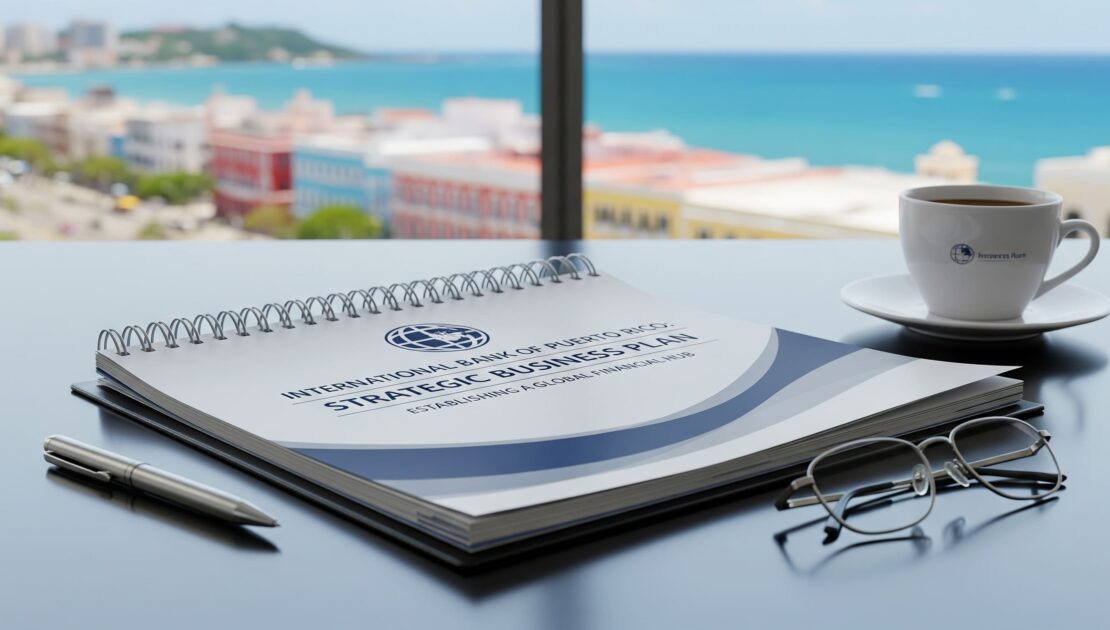Crafting a Business Plan for an International Financial Entity (IFE) License in Puerto Rico: Essential Requirements and Guidance

As the operator of an educational resource dedicated to navigating the complexities of international banking under Puerto Rico’s Act 273 (the International Financial Center Regulatory Act), I often emphasize that obtaining an IFE license is not just about meeting capital requirements or filing paperwork—it’s about demonstrating to regulators that your proposed institution is viable, compliant, and a positive addition to Puerto Rico’s financial ecosystem. At the heart of this process lies the business plan, arguably the most critical document in your application to the Office of the Commissioner of Financial Institutions (OCIF).
Unlike a typical business plan aimed at attracting investors—flashy, optimistic, and focused on explosive growth—an IFE business plan is a conservative, regulator-centric document. It’s designed to assure OCIF that your international bank (or IFE) will operate stably, adhere to strict compliance standards, and achieve realistic milestones without introducing undue risk to the market. These plans are highly specific, incorporating a 5-year financial model, a detailed feasibility study, mandatory performance goals for the first 2-3 years, and an extensive compliance section. Drawing from OCIF guidelines, insights from the U.S. Federal Reserve, and practical experience in Puerto Rico’s offshore banking sector, this article outlines the key requirements and structure for an effective IFE business plan. Whether you’re applying for a de novo IFE or acquiring an existing one, understanding these elements can significantly enhance your chances of approval.
Why the Business Plan Matters in Puerto Rico’s IFE Licensing Process
Puerto Rico’s Act 273, enacted in 2012, aims to position the island as a hub for international financial services by offering tax incentives (e.g., a 4% flat tax rate on net income for qualifying activities) while maintaining robust regulatory oversight. IFEs are permitted to engage in a range of offshore activities, such as accepting deposits from non-residents, issuing loans, and providing investment services, but they are prohibited from serving Puerto Rican residents directly to avoid competing with local banks.
The business plan is submitted as part of a two-stage application process: first, for a permit to organize the entity, and second, for the final license. OCIF reviews it meticulously to ensure the IFE aligns with Puerto Rico’s economic goals—attraction of foreign investment, enhancement of global financial services, and bridging U.S. and Latin American markets. Key requirements include:
- Conservative Tone: Projections must be realistic and defensible, avoiding hype. Regulators expect you to underpromise and overdeliver.
- 5-Year Financial Model: A detailed projection covering revenues, expenses, balance sheets, and cash flows for the first five years, with sensitivity analyses for economic downturns.
- Feasibility Study: An independent or integrated analysis proving market demand, competitive edge, and operational viability.
- Mandatory Goals: Specific, measurable targets for the first 2-3 years, such as deposit volumes, loan portfolios, and compliance metrics. Failure to meet these post-licensure can trigger audits or revocation.
- Compliance Focus: A substantial section (often 20-30% of the document) detailing anti-money laundering (AML), Bank Secrecy Act (BSA), know-your-customer (KYC), and risk management protocols.
- Minimum Capital: For new IFEs, at least $10 million in paid-in capital, fully funded at licensing.
- Unique Niche: You must articulate a specialized market role to justify the license, as OCIF prefers focused operations over broad, unfocused services.
Failure to address these can result in denial, as OCIF prioritizes stability over innovation. Now, let’s break down the recommended structure, based on a proven outline tailored for Act 273 applications.
Executive Summary: Setting the Stage for Approval
The executive summary is your first—and sometimes only—chance to captivate regulators. Written last but placed first, it provides a concise overview (2-5 pages) of the entire plan, summarizing the business model, key personnel, target market, and financial outlook. Unlike investor pitches, this section must “tell the story” in a professional, risk-averse narrative: Who are the ultimate beneficial owners (UBOs) and management team? What unique niche will the IFE fill? How will it contribute to Puerto Rico’s economy without introducing volatility?
Key elements to include:
- Business Description: Outline the IFE’s core activities, such as offshore deposits, trade financing, or wealth management for high-net-worth individuals (HNWIs).
- Marketing Plan Overview: Highlight target demographics (e.g., 50% Asian clients, 20% Australian, 30% North American; focused on HNWIs and businesses with $1M minimum deposits).
- Financial Projections Summary: Tease the 5-year model, noting conservative growth assumptions and break-even points.
- Differentiation: Explain what sets your IFE apart—e.g., specialized services for Latin American exporters or tech-enabled compliance for Asian investors.
- Company and Related Entities: Include an ownership chart and summaries of UBOs, directors, and any affiliates.
Remember, this is for OCIF: Emphasize stability, compliance, and economic benefits like job creation (e.g., number of Puerto Rican employees).
Business Summary: Defining Your Institution’s Purpose and Operations
This section (5-10 pages) delves into the IFE’s foundational elements, describing its structure, purpose, and operational scope. Regulators use it to assess alignment with Act 273’s objectives: attracting foreign investment, facilitating global services, and providing offshore banking without domestic interference.
Cover:
- Institution Overview: Detail the business type (e.g., corporation, LLC), domicile (Puerto Rico), products (deposits, loans, forex), and any nontraditional activities (e.g., through subsidiaries).
- Company Purpose: Align with Act 273 goals, such as:
- Attracting foreign capital via tax incentives.
- Serving as a U.S.-Latin America financial bridge.
- Offering services like wealth management, trusts, and securities trading to non-residents.
- Products and Services: List requested services from Act 273’s 25 permissible activities (see appendix below). OCIF prefers focus—request only 5-10 services with strong justification. For example, always include #1 (accepting deposits from foreigners) to use “bank” in your name; avoid #25 (asset management for funds) unless it’s a family office or captive.
- Operational Details: Discuss staffing (e.g., Puerto Rico-based compliance officers), technology infrastructure, and branches (if any, outside Puerto Rico).
This section must demonstrate a deep understanding of international banking, with references to U.S. laws (e.g., how activities mirror those allowed for U.S. bank subsidiaries).
Marketing Plan: Proving Market Viability and Feasibility
A robust marketing plan (10-15 pages) is where you integrate the feasibility study, showing OCIF that your IFE has realistic prospects for success. Base it on current data (e.g., from World Bank reports or industry analyses), with sourced assumptions. Include an economic component addressing Puerto Rico’s context—stable U.S. territory status, but vulnerable to hurricanes or global recessions.
Subsections:
- Product Strategy: Describe phased rollout over three years, costs, and variations by market. Cover secondary activities like loan participations or broker usage (including commissions). For example: Year 1 focuses on deposits; Year 2 adds trade financing.
- Market Analysis: Define targets (e.g., geographic: Asia 50%, Australia 20%, North America 30%; demographics: HNWIs 70%, businesses 30%). Use data to estimate size and growth.
- Economic Component: Forecast for three years (extend to five in financials), including downturn scenarios. Discuss factors like U.S. interest rates or regional trade flows.
- Feasibility Study Integration: Embed or attach a study validating demand (e.g., surveys of potential clients) and competitive edge (e.g., lower fees via Puerto Rico’s incentives). Prove sustainability without relying on speculative growth.
Solicitation methods (e.g., digital marketing, agents) must comply with AML rules.
Financial Condition and Projections: The 5-Year Model
This technical section (15-20 pages) is scrutinized for realism. Provide a 5-year financial model, including:
- Pro Forma Statements: Income, balance sheets, cash flows, with monthly breakdowns for Years 1-2 and annual for 3-5.
- Assumptions: Conservative (e.g., 10-15% annual growth in deposits; sensitivity to 20% economic dips).
- Capital Adequacy: Detail $10M minimum, plus reserves for risks.
- Break-Even and Goals: Mandatory targets, e.g., $50M deposits by Year 2, profitability by Year 3. These become enforceable post-licensure.
- Funding Sources: Equity, loans (secured if from GDB or EDB).
Use GAAP standards; include ratios like ROA/ROE.
Compliance and Risk Management: The Core of Regulator Trust
Devote 20-30 pages to compliance, as IFEs must adhere to BSA/AML, OFAC, and OCIF regs. Cover:
- Policies: KYC, transaction monitoring, suspicious activity reporting.
- Personnel: Dedicated compliance officer with credentials.
- Training and Audits: Annual programs, third-party reviews.
- Risk Assessment: For money laundering, cyber threats, and operational failures.
This section reassures OCIF of your commitment to integrity.
Additional Sections and Best Practices
- Management and Personnel: Bios, experience, and succession plans.
- Operations and Technology: IT security, disaster recovery.
- Appendix: Permissible Services Under Act 273: List all 25 (as outlined in the document), with justifications for selections.
Tips: Engage Puerto Rico-admitted counsel for drafting; aim for 50-100 pages; update for current data (as of August 2025). Common pitfalls: Overly ambitious projections or vague compliance.
By following this structure, your business plan becomes a compelling case for licensure, aligning with Puerto Rico’s vision as a secure offshore hub. For personalized advice, consult OCIF or a specialist—success starts with thorough preparation.
Appendix: Complete List of Permissible IFE Services Under Act 273
1. Accept deposits from foreign persons in checking accounts as well as demand or fixed term deposits and interbank funds demand deposits, including interbank demand deposit accounts, or otherwise borrow money from international financial entities and from any office or agency of the government of Puerto Rico or the United States of America.
2. Accept properly collateralized deposits or otherwise borrow properly collateralized money from the Government Development Bank for Puerto Rico and the Economic Development Bank for Puerto Rico.
3. Make, procure or place loans, or otherwise extend credits to foreign persons, provided that if said loans or credits are granted to an affiliate of the international financial entity, the terms and conditions thereof shall not be more favorable than those that would be offered to a non-related person in similar transactions.
4. Discount, rediscount, deal or otherwise trade in money orders, bills of exchange, and similar instruments.
5. Issue letters of credit or guarantee letters for foreign persons, provided that if said letters are issued on behalf of an affiliate of the international financial entity, the terms and conditions thereof shall not be more favorable than those that would be offered to a non-related person in similar transactions.
6. Engage in trade financing activities of title documents representing commodities in international commerce.
7. Engage in any international financial entity activity outside of Puerto Rico.
8. Underwrite, distribute, and otherwise trade in securities, notes, and other obligations outside of Puerto Rico.
9. Engage in such activities as may be necessary or incidental to the activities described in this section, including the financing of exports and imports.
10. Act as fiduciary, executor, administrator, registrar of stocks and bonds, property administrator, agent, advisor or consultant in any manner related to international financial activities, provided that the international financial entity shall not manage or have discretion over funds of persons.
11. Hold securities and/or stock in fiduciary capacity outside of Puerto Rico.
12. Acquire and lease personal property at the request of the lessee who is a foreign person.
13. Buy and sell foreign currency for the account of foreign persons.
14. Serve as a clearinghouse for international financial entities.
15. Organize, manage, and provide management services to international banking entities and to other international financial entities.
16. Engage in such other activities as may be determined by the Commissioner by regulation or order to be related to the operation of an international financial entity.
17. Establish branches outside of Puerto Rico, subject to the approval of the Commissioner.
18. With the prior approval of the Commissioner, establish branches in Puerto Rico or in the continental United States.
19. Act as an insurance agent or broker for any insurance company authorized to do business in Puerto Rico, provided that the insurance is related to international financial activities.
20. Render services such as economic or financial advisor to foreign governments or their instrumentalities.
21. Engage in portfolio management for foreign persons.
22. Custody of digital assets, including cryptocurrencies, with prior regulator approval from OCIF.

